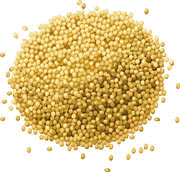International Sorghum and Millet Collaborative Research Support Program (INTSORMIL CRSP)
Date of this Version
1987
Document Type
Article
Abstract
The Sorghum/Millet CRSP was initiated on July 1, 1979. This annual report covers the activities for program Year 8. Eight years of experience have reaffirmed the need for this type of research program aimed at relieving the constraints to improved sustainable sorghum/millet production in developing countries. The emphasis by the CRSP on development of collaborative linkages with national sorghum/millet research programs has been unique. Significant contributions have been made toward resolving constraint problems and enhancing the national program capability by strengthening its human resource base as well as the national institutional capability to conduct collaborative research. Thus, the CRSPs present a unique model for conducting agricultural research in collaboration with developing country agricultural research programs.
1987 Project Reports -- The Sorghum/Millet CRSP has research linkages in three geographic regions as delineated by AID through the organization of the Regional Bureaus; the Africa Bureau, the Latin America and Caribbean Bureau, and the Asia/Near East Bureau. Depending upon the host country, the range of disciplines covered under collaborative activities between INTSORMIL and the host country varies from two to seven. The more multidisciplinary the country program is, the greater the potential for exchange of information on a regional or international basis. This section of the report describes the collaborative research activity progress between individual U.S. scientists and their counterparts along disciplinary lines. Research progress has been significant. New varieties and hybrids have been identified which can make a contribution to the improvement of sorghum production in the developing world. A better understanding of insect pests and disease problems in the collaborating countries has been elucidated. Progress in food grain quality has been a major development. This is true for Latin America and Africa. The level of progress in the INTSORMIL program is indicative of the level of interest and commitment that the U.S. and host country collaborators have in the different areas of research. The collaborative mode of interaction has contributed significantly to the development process and has facilitated the administrative process for accomplishing the tasks undertaken by the program. The annual progress reports were prepared by the U.S. principal investigators. Results presented are from research accomplished by both the U.S. and host country collaborators.


